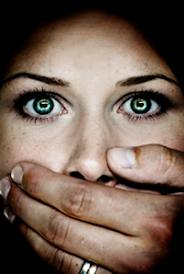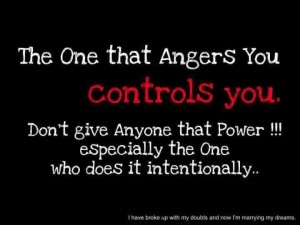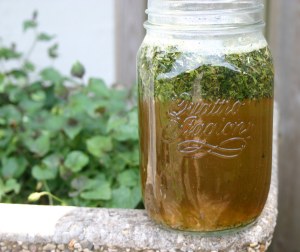 As I sit here with tears of disbelief after watching a documentary on domestic violence (“Crime After Crime” or “Telling Amy’s Story” are two powerful documentaries to watch on this subject), I am stirred and moved to talk and bring awareness to this subject. Â Many people know that my passion is speaking about suicide prevention and awareness as I, too, have come face to face with this devil. Â Recently, I have been getting more involved with the domestic violence issues in my community, which are not just isolated to the Hampton Roads, Virginia area, but are an epidemic around the world! Â Did you know that every 9 seconds a woman is beat? Â Yes, I said seconds, not minutes, hours or days! Â I, myself, buried for years the fact that, not only did I witness domestic violence in my own home, but my first relationship also contained the cycle of power and control. Â Domestic violence IS ultimately about control.
As I sit here with tears of disbelief after watching a documentary on domestic violence (“Crime After Crime” or “Telling Amy’s Story” are two powerful documentaries to watch on this subject), I am stirred and moved to talk and bring awareness to this subject. Â Many people know that my passion is speaking about suicide prevention and awareness as I, too, have come face to face with this devil. Â Recently, I have been getting more involved with the domestic violence issues in my community, which are not just isolated to the Hampton Roads, Virginia area, but are an epidemic around the world! Â Did you know that every 9 seconds a woman is beat? Â Yes, I said seconds, not minutes, hours or days! Â I, myself, buried for years the fact that, not only did I witness domestic violence in my own home, but my first relationship also contained the cycle of power and control. Â Domestic violence IS ultimately about control.
To help you better understand this cycle, I am including information from the Power and Control wheel which I hope helps you, or someone you love, identify the patterns of abuse and violent behavior an abuser may exhibit.
Power and Control Wheel:
- Intimidation: Making the partner afraid by using threats, looks, and gestures.  Destroying the partner’s property. Abusing pets. Wielding weapons or kitchen implements.
- Emotional Abuse:  Putting him or her down.  Humiliating the person.  Playing head games.  Not taking responsibility for one’s own actions.  Ridiculing the partner’s appearance or sexual performance.
- Isolation:  Controlling what he or she does. who the partner sees and talks to, what he or she reads, and where the partner goes.  Limiting the partner’s outside activities.  Using jealousy to justify actions.
- Denying, Minimizing, and Blaming:  Making fun of the abuse and not taking his or her concerns seriously.  Saying the abuse  didn’t happen.  Shifting responsibility for the behavior. Saying the victim caused it.
- Using Children:  Making the partner feel guilty about the children.  Criticizing the partner in front of the children. Telling the children the partner doesn’t love them.  Interfering with visitation.
- Economic Abuse:  Preventing the partner from getting a job, or demanding the partner work longer hours or get a second job. Making the partner ask for money.  Not letting the partner have access to family income.
- Gender Privilege:  Treating the partner like a servant, acting like the “king or queen of the castle.”  Being the one to  define the partner’s roles.  Making a false allegation.
- Coercion and Threats:  Making and/or carrying out threats to do something to hurt the partner.  Threatening to leave the partner or report the person to welfare.  Threatening to make a false accusation.
A few other statistics that you may find helpful are:
- Females experience the highest amount of intimate partner violence between the ages of 16-24.
- Among female teenage victims of violence, a former or current boyfriend or girlfriend was responsible 94% of the time.
- 1 in 4 people have been called names and harassed by a partner via text message.
- 30% of teens in relationships have been “stalked” by their partners 10, 20, 30 times an hour through text messages that ask “Where are you? Are you with someone? What are you doing?”
- Over half the rape victims report being raped between the ages of 12-24.
- Half of the reported date rapes occur amongst teenagers.
- 1 in 3 teens report knowing a friend or a peer who has been hit, punched, kicked, slapped or physically hurt by a dating partner
- 57% of teens knows someone who has been physically, sexually, or verbally abusive in a dating relationship.
 Generally, I don’t fill my blogs up with statistics, however, I feel the extreme need to get this information out. Â I think the staggering facts above are clear that much of this abuse happens in young relationships. Â It happened to me as well. Â What we think is love is merely possessive behavior designed to look like love by manipulating one’s feelings. Â It isn’t love to smother a person, track their every move, stalk them, blow up their phone with text messages or physically touch them in any manner that is abusive. Â It is also a common pattern that the controlling abusive partner turns around after the abuse occurs and melts into a tyrade of “I’m sorry’s” and “I love you so much” language that it becomes so deep you could literally trudge through it with rubber boots on. Â This is part of the abuse cycle.
Generally, I don’t fill my blogs up with statistics, however, I feel the extreme need to get this information out. Â I think the staggering facts above are clear that much of this abuse happens in young relationships. Â It happened to me as well. Â What we think is love is merely possessive behavior designed to look like love by manipulating one’s feelings. Â It isn’t love to smother a person, track their every move, stalk them, blow up their phone with text messages or physically touch them in any manner that is abusive. Â It is also a common pattern that the controlling abusive partner turns around after the abuse occurs and melts into a tyrade of “I’m sorry’s” and “I love you so much” language that it becomes so deep you could literally trudge through it with rubber boots on. Â This is part of the abuse cycle.
If you are in this situation or someone you love is in the situation, please know there is help. Â You can always go to the police, get a restraining order, obtain advice from our Clergy, find a local domestic violence shelter in your area or contact a domestic violence advocate. Â Unfortunately, sometimes the violence escalates upon a person’s decision to leave. Â Remember, we are valuable and each person has the right to be treated with kindness, express their feelings peacefully, earn and spend their own money, wear what makes them comfortable, be talked to respectfully and end a relationship that doesn’t make them happy.
Sometimes you are most afraid of doing is the very thing that will set you free.
Meet Marcella Zappia, Writer, Nia Instructor, Ageless Grace Educator and Host of the new and upcoming show Cella’s Chat on the Voiceamerica Health and Wellness Channel Every Thursday at 1 pm Pacific Standard Time. Tune in to this weeks episode “Cella’s Story, An Attempt Survivors Story of Healing“
AlsoCheck out Marcella’s Blogs and her websites, Ageless Grace and Nia Now
Just as a caterpillar sheds its skin and becomes a butterfly, Cella’s life fell apart and she too was reborn. From the outside, life appeared perfect. As is the reality for many women, Cella thought it was her personal obligation to take care of everyoneâs needs but her own. That is exactly what she did up until May 13, 2008. She was married to a military man for twenty years who was often absent during that time due to his job. This left her to raise two boys, work full time in the legal field, all while thinking it was perfectly normal to run herself into the ground. Cellaâs own battle began as the perfect storm of circumstances came together to initiate her downward spiral into illness and depression. Feeling hopeless that she would never salvage the person she was before, Cella felt her only solution out of the pain was to take her own life. As an attempt survivor, she learned that the greatest resource was the healer within. Now she works with people to help them rekindle their passion for life. As a certified Nia instructor and Ageless Grace educator, Cella is also versed in many healing modalities including Qigong, Tai Chi, nutrition and wellness. Through speaking, writing, and the dance arts, as well as the creation of a woman’s support group, it is Cella’s desire to help others to manifest and transform their lives to find their personal empowerment. A true testament that all things are possible, she is walking her talk while teaching others to do the same.




